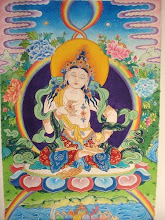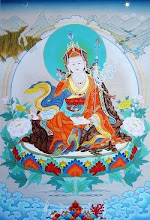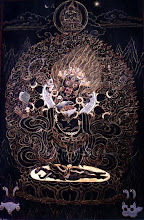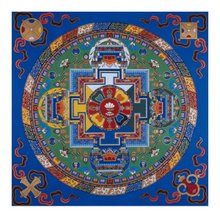 The film opens with a group of European tourists in Bodhgaya who come upon an elderly Indian devotee who relates the story of the great sage. What follows is a version of the life of the Buddha weighted toward his early life before leaving home, a time when he was known by his given name, Siddhartha. A few scenes featuring King Suddhodana and Queen Maya help establish the auspicious birth, while Siddhartha's childhood is skipped altogether (most likely to avoid the expense of an additional actor). The bulk of the story is given over to Siddhartha and Yasodhara's courtship
The film opens with a group of European tourists in Bodhgaya who come upon an elderly Indian devotee who relates the story of the great sage. What follows is a version of the life of the Buddha weighted toward his early life before leaving home, a time when he was known by his given name, Siddhartha. A few scenes featuring King Suddhodana and Queen Maya help establish the auspicious birth, while Siddhartha's childhood is skipped altogether (most likely to avoid the expense of an additional actor). The bulk of the story is given over to Siddhartha and Yasodhara's courtship and marriage, their life of leisure in a secluded palace, and Siddhartha's visit to town in which he is overcome by scenes of age, sickness and death. The six year search for truth is given short shrift. Siddhartha leaves home (his son Rahul is written out of the script) and walks a while, his family in a fever to locate and bring him back home, before sitting down to enlightenment. He is then seen preaching to a gathering of 20 to 30 people by a riverside, where he is found by his wife, Yasodhara, who then and there becomes his first disciple.
and marriage, their life of leisure in a secluded palace, and Siddhartha's visit to town in which he is overcome by scenes of age, sickness and death. The six year search for truth is given short shrift. Siddhartha leaves home (his son Rahul is written out of the script) and walks a while, his family in a fever to locate and bring him back home, before sitting down to enlightenment. He is then seen preaching to a gathering of 20 to 30 people by a riverside, where he is found by his wife, Yasodhara, who then and there becomes his first disciple.
 For a film from this era, the acting is not as overdone as many. Siddhartha most often looks forlorn, his bride Yasodhara desperate (to be married) or distraught (with Siddartha's brooding and then his departure). Devadatta, thankfully, comes off as spiteful and advantageous, not a mustache-twirling villain. There is one cleverly staged scene wherein while Siddhartha talks with someone indoors, his wife passes by outdoors. Otherwise, the staging and camera work are fairly flat and static, not unusual for the silent period. Besides telling a story, this film served as well as something of a travelogue and so the viewer is treated to a number of long shots of temples, palaces, and street scenes.
For a film from this era, the acting is not as overdone as many. Siddhartha most often looks forlorn, his bride Yasodhara desperate (to be married) or distraught (with Siddartha's brooding and then his departure). Devadatta, thankfully, comes off as spiteful and advantageous, not a mustache-twirling villain. There is one cleverly staged scene wherein while Siddhartha talks with someone indoors, his wife passes by outdoors. Otherwise, the staging and camera work are fairly flat and static, not unusual for the silent period. Besides telling a story, this film served as well as something of a travelogue and so the viewer is treated to a number of long shots of temples, palaces, and street scenes.
 In Hindi “prem” is love; “sanyas” to renounce worldly life. The English title, “Light of Asia,” comes from English poet Edwin Arnold's epic poem on the life of the Buddha, first published in London in 1879, and in 1925 still one of the most extensive documents on the life of Buddha published in the English language. Arnold's subtitle for the work was, The Great Renunciation. English-trained Indian lawyer Himansu Rai apparently developed the script based on Arnold's work, which is itself based on a Hinayana Sanskrit text of the third century, the Lalitavistara.
In Hindi “prem” is love; “sanyas” to renounce worldly life. The English title, “Light of Asia,” comes from English poet Edwin Arnold's epic poem on the life of the Buddha, first published in London in 1879, and in 1925 still one of the most extensive documents on the life of Buddha published in the English language. Arnold's subtitle for the work was, The Great Renunciation. English-trained Indian lawyer Himansu Rai apparently developed the script based on Arnold's work, which is itself based on a Hinayana Sanskrit text of the third century, the Lalitavistara.
Prem Sanyas was restored in 2001 by The British Film Institute and National Film and Television Archive. Picture quality is sharp and clean. Light blue, green, and sepia tint has been added to segments to add visual variety for modern audiences used to more color and movement. The orchestral score is surprisingly free of classical Indian elements and is perhaps more noticeable for the lack of voice and engaging characters and drama. According to the Spice website, two musical scores were written for German screenings, one by I. L. Fischer, the other by Hans-Heinrich Dransmann. No music credits appear in my copy of the film.
Director Franz Osten went on to make three more films in India, one of which, A Throw of the Dice, is currently available commercially. Prem Sanyas, unfortunately, is not, though a copy is in circulation among collectors.
Even with a release date of 1925, Prem Senyas is apparently the world's second film about the life of the Buddha. The first was the 1923 film, Buddhadev, from director Dhundiraj Govind Phalke, the father of Indian cinema. Buddhadev appears also to be out-of-print.
Release: 1925
- Director: Franz Osten
- Length: 97minutes
- Prem Sanyas film clip
- Online version of Edwin Arnold's Light of Asia
- Franz Osten at Wiki
#



























Hi,
ReplyDeleteI'm a doctoral student in history and my project includes a chapter on German/Indian cinematic collaboration. I was wondering where you got your copy of "Light of Asia." I spent the last year in Germany, and although I was ultimately able to track down a copy to view in a film archive, it was hard won. And if you have a personal copy, I'm very curious how one might go about acquiring such a thing--especially since, as you noted, the German copy was missing its musical score.
Anyway, I'm excited that other people are interested in this film; while the film itself has some fascinating elements, I think the larger international trends that informed its production are unbelievably cool. If you have any more insights--or interested in mine--my email is jkamm@uiuc.edu
cheers,
j
Glad to hear from you, J. Check your email for a personal message. If you have any links to articles, reviews or discussions of Prem Sanyas, please feel free to post them here.
ReplyDeletemy comment comes here a year late but just found that it is being screened today in amsterdam
ReplyDeletehttp://www.bffe.org/nl/programma/festival-2009/zaterdag-3-oktober/light-of-asia/
Enjoy!
ReplyDelete